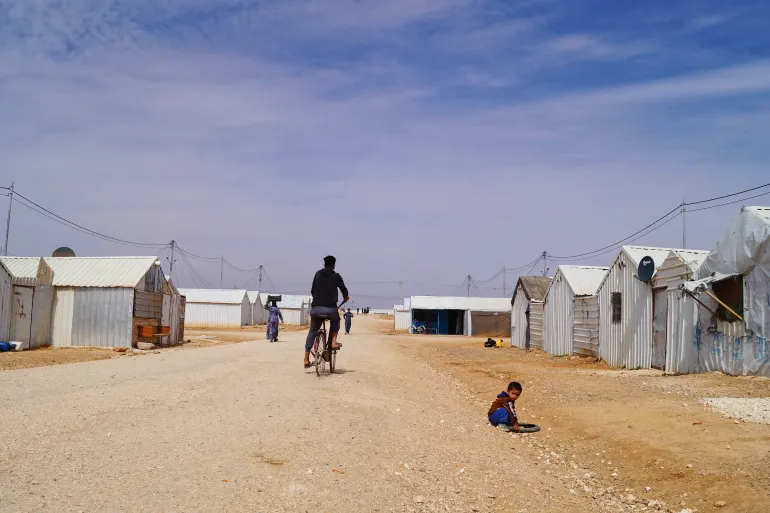A life of isolation for Syrian refugees in Jordan’s Azraq camp
Opened in 2014, the remote refugee camp was built in response to overcrowding at Zaatari, Jordan’s largest facility for Syrian refugees.

29 Mar 2022
Azraq, Jordan – Uniform rows of white caravans plotted neatly in the desert’s empty expanse are home to nearly 38,000 Syrian refugees.
They are the victims of the now 11-year-long Syrian war who continue to wait at Jordan’s Azraq camp, their futures still uncertain and their livelihoods still dependent on donors’ generosity.
For thousands of children born and raised in the camp, the arid landscape is the only back yard they have known.
“Can you take us outside,” asked 11-year-old Asmaa Fawaz Barhu who came to Azraq camp when she was five.
“‘Since we have been here, we have not seen trees, we have not seen animals,’ my children say,” Asmaa’s mother, Zahra Ghareeb al-Daher, told Al Jazeera. “‘Are we going abroad, going to travel to Germany?’ they ask me.”
Zahra’s seven children, two of whom were born in the camp, have not left the premises since they arrived in 2016, she said.
Residents must present a work permit to leave, which only 30 percent of the camp’s working-age population holds, according to the United Nations High Commissioner for Refugees (UNHCR) Jordan spokeswoman, Lilly Carlisle. They are occasionally granted “leave permits”, which are valid for on average a week with repercussions for those who overstay.
Opened in 2014, the camp was designed to address the challenges that emerged during the informal growth of Zaatari camp, Jordan’s largest for Syrian refugees. However, the top-down system of management, high security, and remote location have left Azraq commonly referred to as the “least desirable” of Jordan’s two main camps for Syrian refugees.
It hosts “Village 5”, a secured area where nearly 10,000 Syrians are kept on the premises for “reasons of safety and national security”, noted Carlisle, the camp’s stringent security protocols largely attributable to the prison-like compound.
Azraq has never reached even half its maximum capacity of 120,000, the majority of refugees choosing to bear the high costs of living outside its perimeters.
But for some, there is no alternative. “What are we going to do?” Zahra said. “Life is very hard out there. We won’t be able to afford it.”